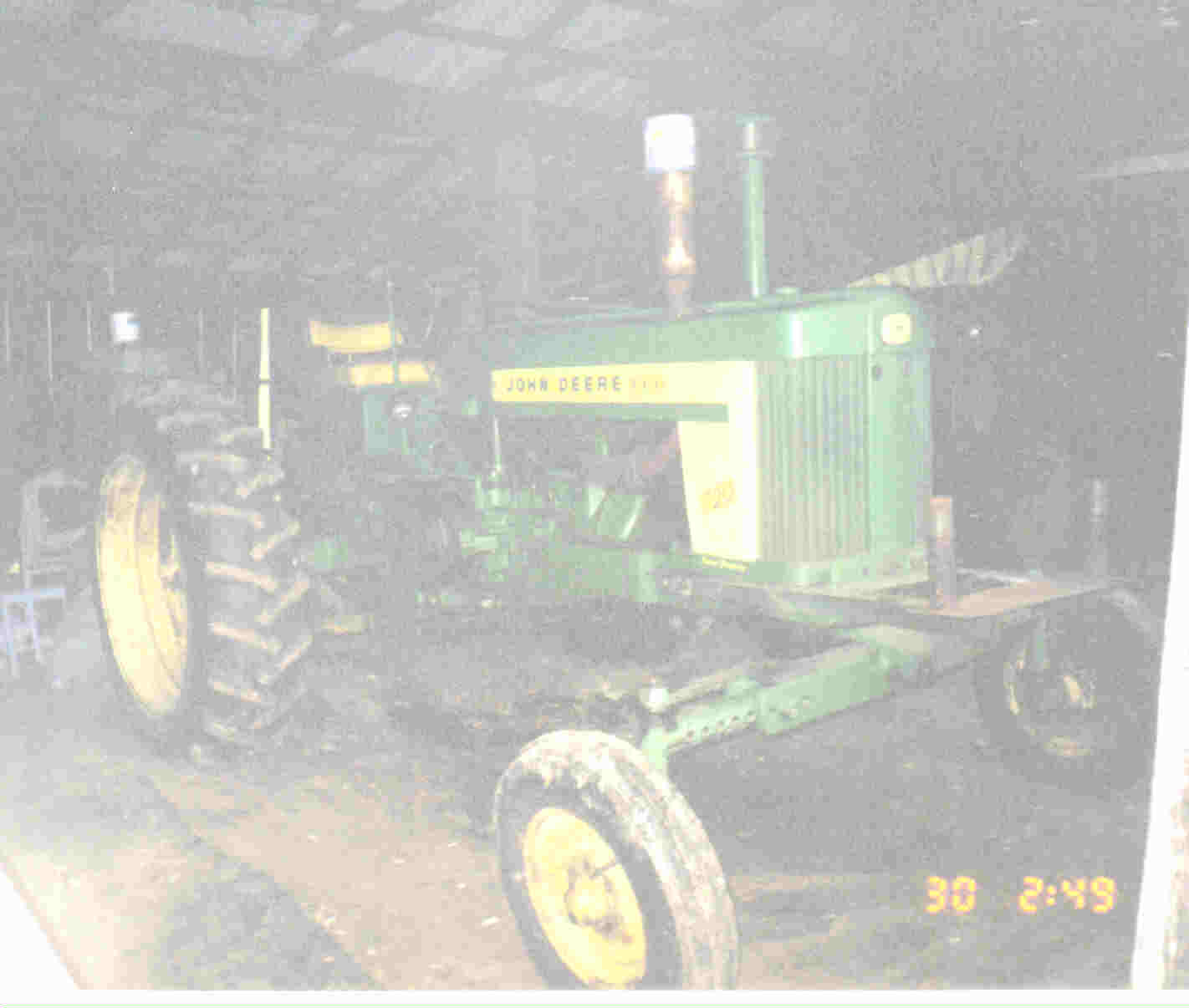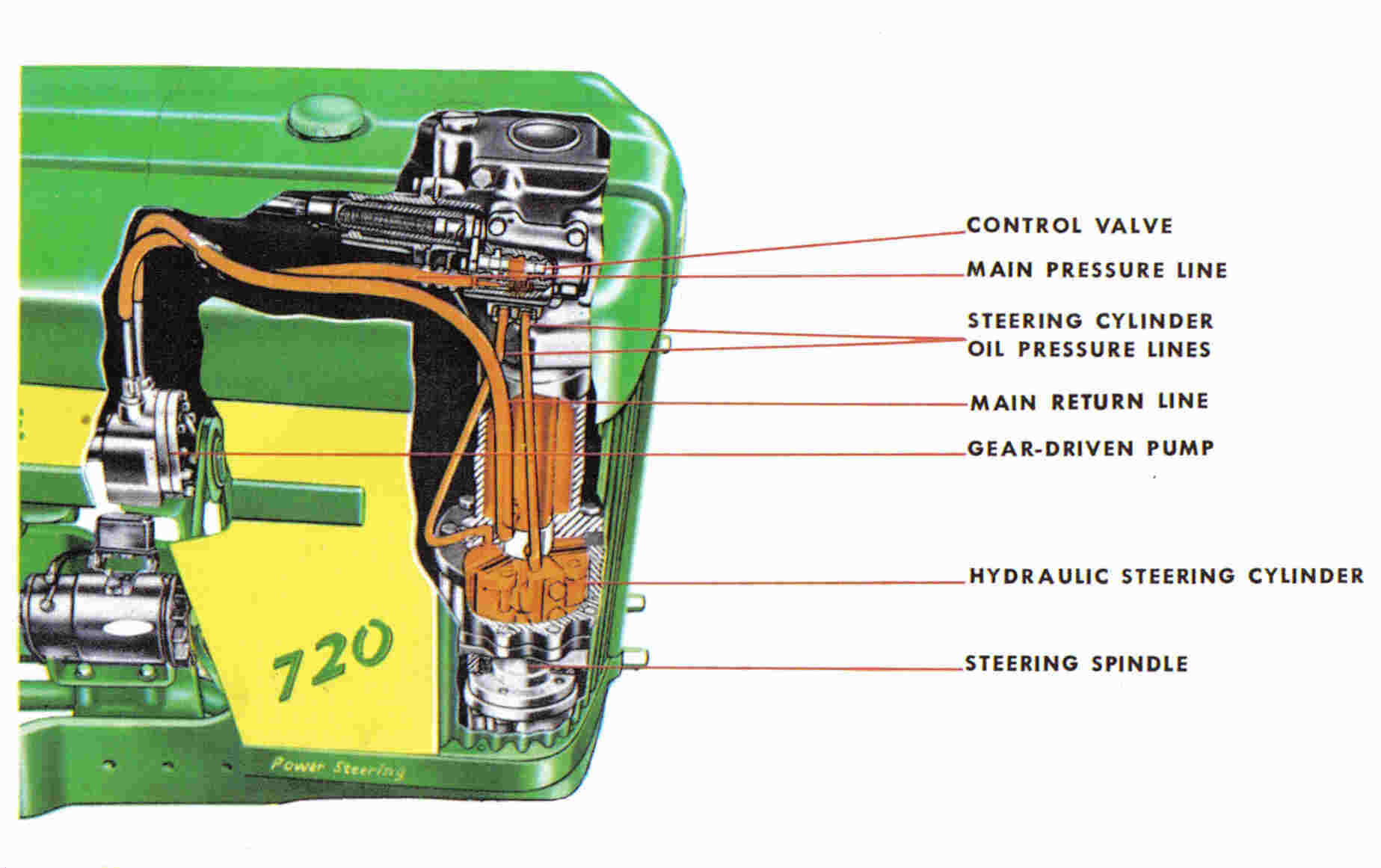With 58 belt h.p.
the John Deere 720
set a new power record
|
|
John Deere Model 720 with 3 fuel choices, full 5 plow power,
Deere's answer for the requirements of large acreage row
crop farmers.
John Deere model 720 - 1956 to 1958
As a direct replacement for the popular John Deere Model 70,
the John Deere Model 720 soon became a very popular tractor in
it's own right.
The Model 720 was advertised as having full 5 plow power. A tractor
that would replace two tractors on many farms at plowing and disking
time....a tractor that handled easier than many smaller tractors....a
tractor that scooped the field in modern functional design and in
proven performance.
Engines in the gasoline, all fuel and LP Gas received some major
improvements, like a new alloy steel crankshaft, heavier connecting
rods, larger piston pins, improved cyclonic swirl in the combustion
chamber, and higher rpm's.
Bore and stroke was 6 x 6 3/8, 360 cid, 1125 rpm, 53.05 drawbar and
59.12 belt horsepower.
Both the diesel and fuel version of the 720 received major improvements
over the Model 70 in hydraulics along with the addition of a much
improved three point hitch, plus the bright yellow and green paint
on the sides of the hood and grill.
Our 1958 John Deere 720 Diesel Tractor

Find
out more about this tractor here
John Deere 720 Diesel Tractors
Basically the same engine was used in the 720 Diesel as was in the 70
Diesel except that there was now a separate oil line to lube the
center main bearing, there was an improved combustion chamber shape
and larger valves which allowed the engine to breath better.
The biggest change over from the 70 Diesel to the 720 Diesel was by
dropping the old Model G transmission (high low range) and using a
new 6 speed transmission with a creeper first gear. (which indeed
just creep along)
The 720 diesel engine had a bore and stroke of 6.12 x 6.4, 376 cid,
1125 rpm and 53.7 drawbar and 58.8 belt horsepower.
The V 4 Pony motor used on the 70 was retained, although starting
controls was now by using two levers instead of the single lever
on the 70. One decompressed the engine, the other lever was exclusively
for engaging the pony pinion to the flywheel ring gear.
The 24 volt electric starting system was adopted as an option in
February of 1958.

When pulled down to it's last revolutions there was the possibility of
the diesel engine beginning to run backwards, which could easily
result in some major engine damage. An engineering change was made
late in the 720 run that adopted a new anti reverse camshaft with
better lobe profiles.
In 1959 an independent survey was conducted of the top 5 Nebraska
Tractor Test performers in terms of power and fuel economy. They
determined the first place tractor to be the 720 Diesel. In fact
all the top 5 tractors were made by Deere.
At the Nebraska tests the 720 gasoline, LP Gas and Diesel all developed
more than 58 belt horsepower to set a new power record for row crop tractors.
The 720 Diesel set a new fuel economy record.
Cost of a new 1958 gasoline 720 was $3,700 for the diesel it was $4350.
Shipping weight of a gasoline 720 was 6790 pounds, the diesel version
weighed 7390 pounds.
A total of 27,573 tractors all versions of the 720 were built. Of
these 125 were high crops.
Next: John
Deere 820
Back to: John Deere
620
Return to:
History of Deere Tractors
|